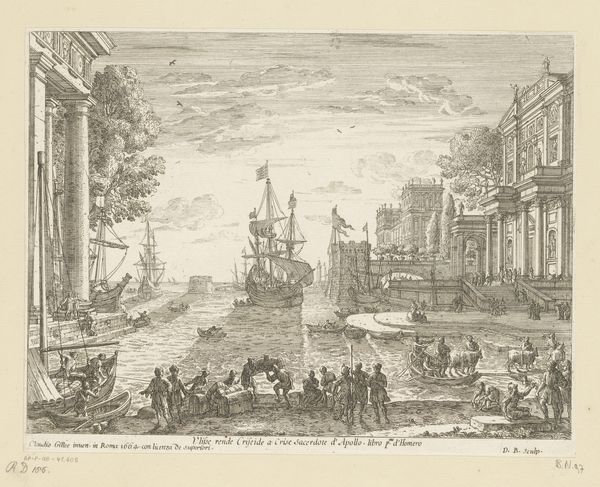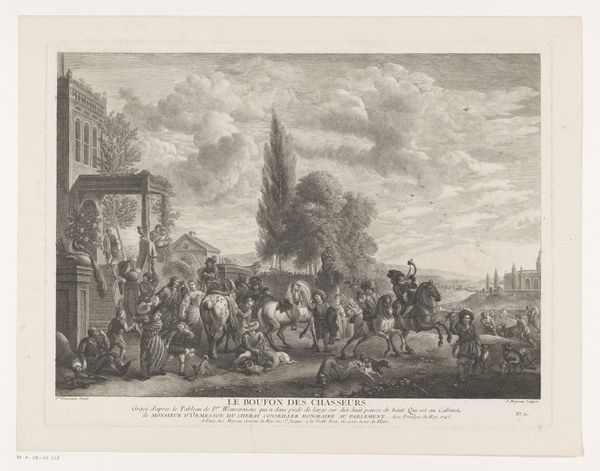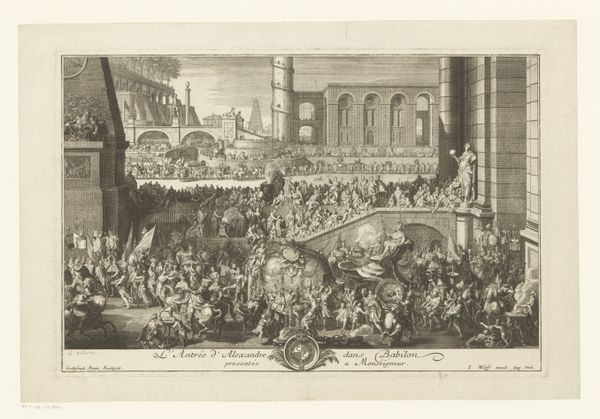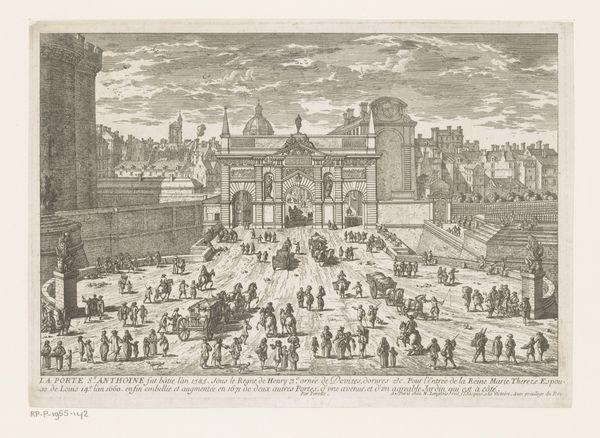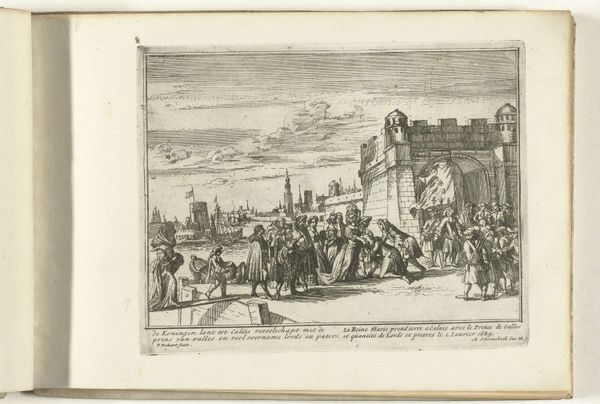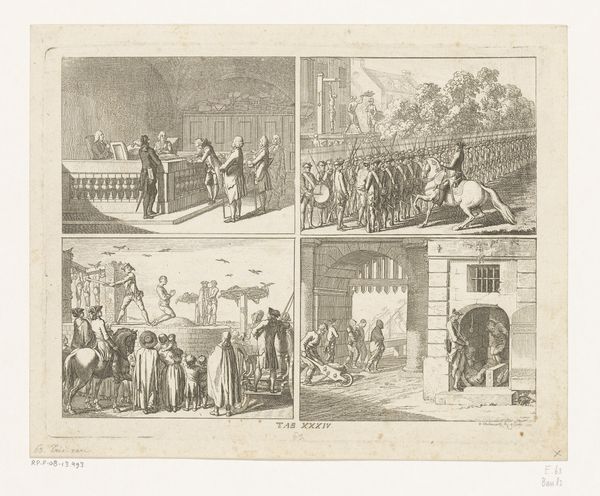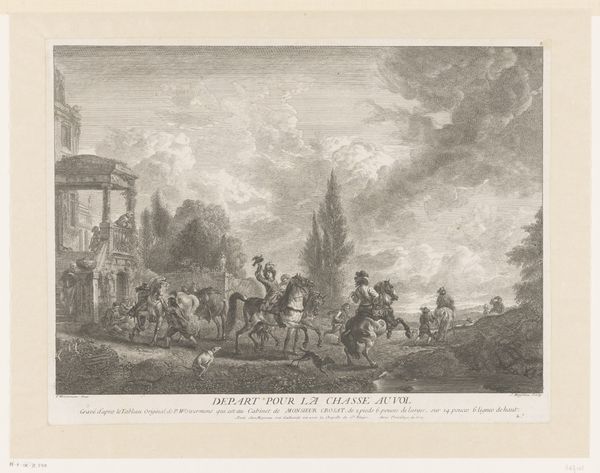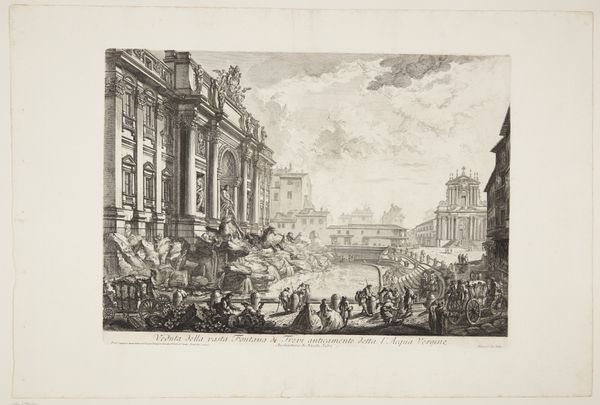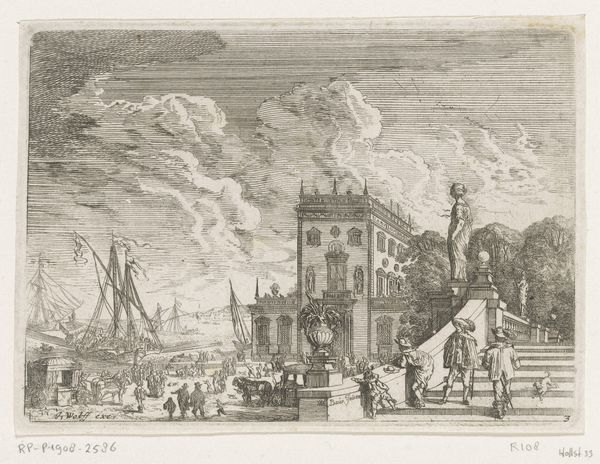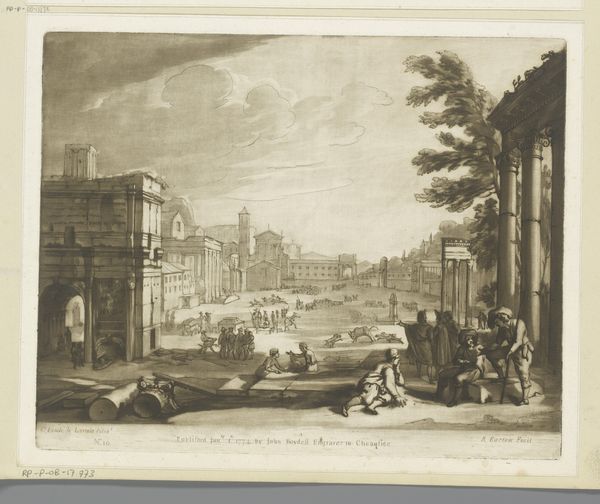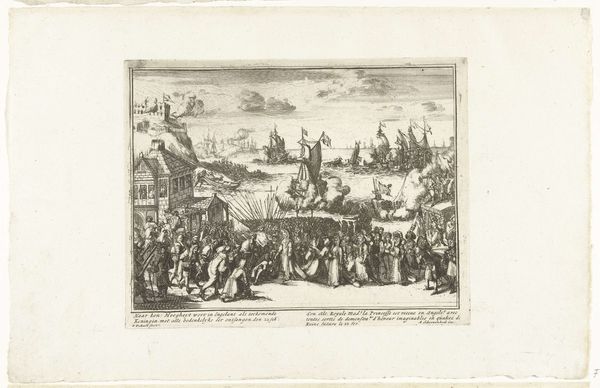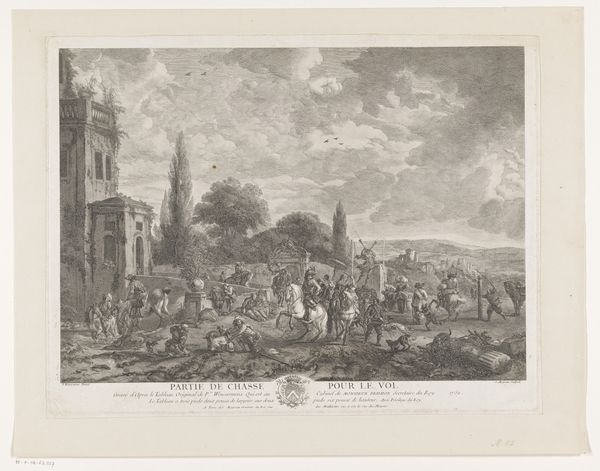
print, engraving
#
narrative-art
#
baroque
# print
#
old engraving style
#
cityscape
#
history-painting
#
engraving
Dimensions: height 240 mm, width 443 mm
Copyright: Rijks Museum: Open Domain
Editor: Here we have Jacques Rigaud’s 1732 engraving, "Gezicht op een stad die geplunderd wordt door soldaten"—a view of a city being plundered by soldiers. It's quite striking, this baroque scene rendered with such detailed lines... the smoke, the architectural details, the sheer number of figures. It makes you wonder about the making of this print. What exactly do you see happening here, looking at the material conditions and all? Curator: We see here the consequences of specific military and political actions rendered through the very material act of engraving and printing. Think about the labor involved. This wasn't some quick sketch. Each line meticulously etched, a repeatable image made accessible. Consider, too, who this was made for, what market it catered to, and what socio-political message was trying to get across using a technology like engraving. Editor: So it's about how this image became reproducible and accessible... Almost a form of early mass communication? Curator: Precisely! The *how* it was made allows us to start figuring out *why*. Who would have purchased such a print? What biases are at play and depicted through it, what did the process entail and suggest? The print medium here makes visible a critique that painting, say, could have more easily disguised within the aura of uniqueness or "fine art." Editor: It's almost like the choice of print democratizes the horror. Or, at least, comments on how accessible such events became through printed news and depictions...I hadn’t considered the socio-political message derived directly from the process. That's eye-opening! Curator: It highlights the interplay between material, labor, and consumption—key to understanding not only this image, but the broader context it comes from. Think of the physical effort of cutting the metal plate itself to the machinery involved in mass-reproducing. These technological choices affect how this history is viewed and told. Editor: I see the image with new eyes now. Focusing on the *means* really changes the *meaning.* Thanks for this take!
Comments
No comments
Be the first to comment and join the conversation on the ultimate creative platform.
